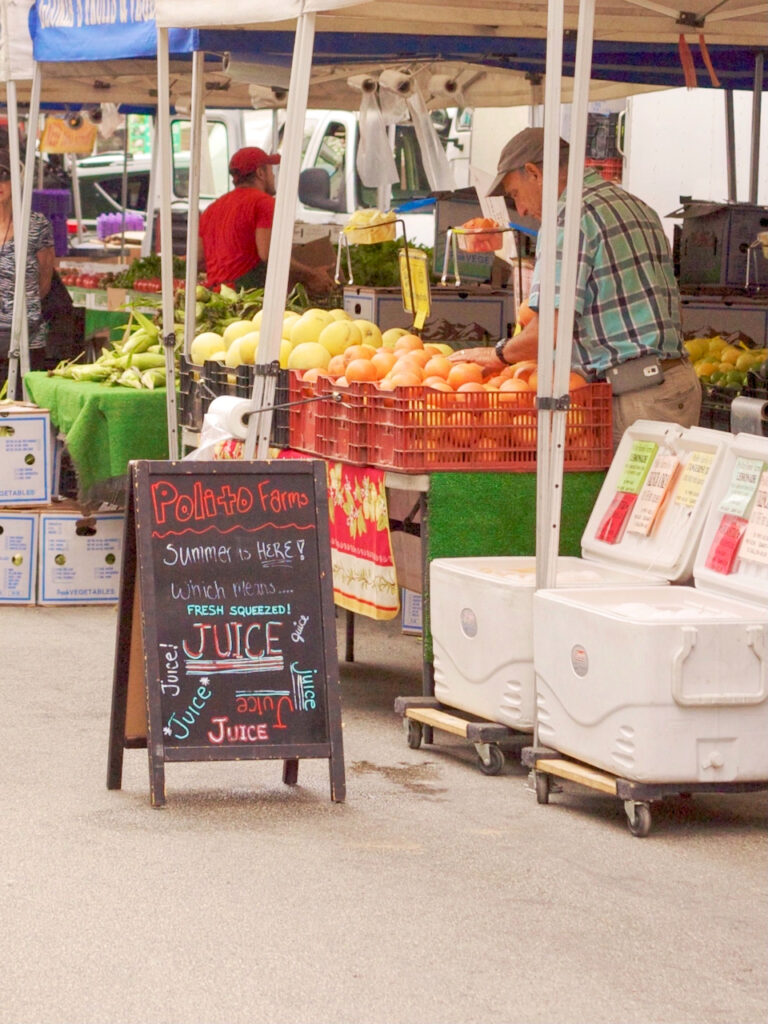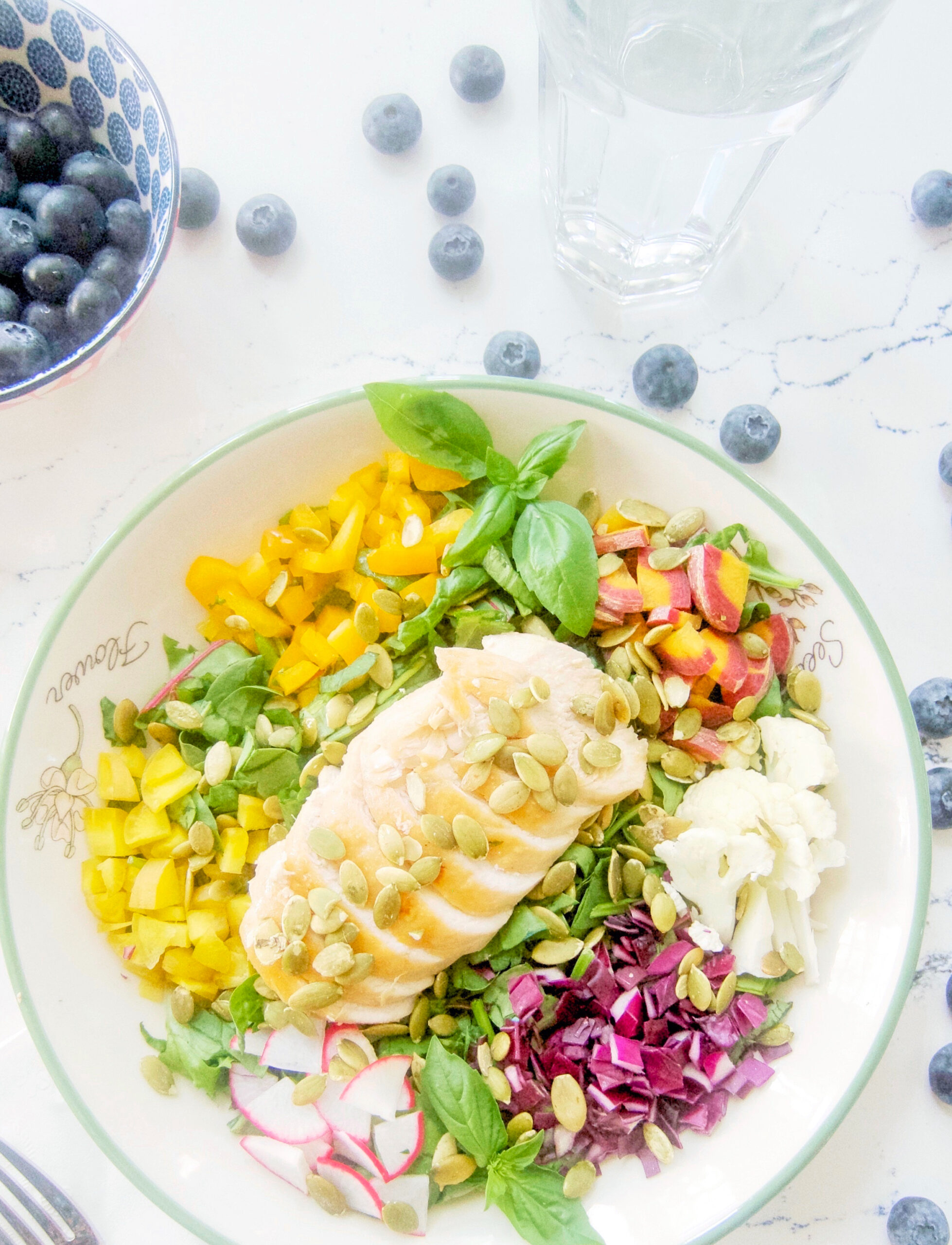The Best Recipe for Water
My son Craig told me some things the other day that were a game changer. He had read an article about the myths of water drinking where he learned that the 8 cups of water we’ve been told to drink was never meant to be 8 cups of plain water. Rather most of it could come from food and drinks including wine, coffee and tea. He also learned that water needs to be sipped not guzzled.
Years ago everyone was being told that drinking plain water was the only way to hydrate the body correctly. But I didn’t like water. And I often didn’t feel good when I drank it. For these reasons my water intake was limited to the water I put in my smoothies and when I was mixing powders in glasses of water. While it was not being said at the time, I was still hoping I was getting enough water from my very healthy diet of mostly soups, smoothies, salads, fruits and vegetables. We were also told that coffee, wine and tea did the opposite of hydrating. Now I know that what I thought all these years had been wrong.
After talking to Craig, I read some articles and learned that somewhere along the line the misinformation had been corrected and some deeper studies had been done. I learned why I didn’t feel good after drinking water and why sometimes I didn’t feel good after the smoothie or mixed power drinks. I’d been guzzling all of them. The articles also explained what guzzling has meant in terms of being well hydrated, having a balanced blood sodium level and a properly functioning gut.
If you fill up your 8 cup water bottle and every hour and a half you pick it up and drink 8 ounces of it all at once, you are guzzling and it’s very possible that the negative side of doing this outweighs the positive. The first reason is because if you drink 8 cups of water in addition to getting 8 cups from your food and drinks, and you aren’t an athlete or outside working and sweating, you could be drinking too much water and your body is suffering. And second, if you are guzzling instead of sipping, yes, your body is getting some hydration, but you are possibly peeing almost all of that water out shortly after drinking it, which means your kidneys were drowning and needed to get rid of the water quickly, and sodium goes out along with it lowering your blood sodium level.
Both sipping water and also salt are part of being hydrated. When hospitals admit you, they put an IV in your arm and you are being hydrated with a mixture of water and sodium chloride. Salt encourages water to be retained by your body and not rush through and into the kidneys and out the other end. One of the functions of your adrenal gland is to secret a hormone to maintain the correct amount of salt in your blood. Too much salt and not enough salt each cause specific health issues and maintaining the right balance has many benefits.
Among the long list of benefits of a well hydrated body, the balance of salt and water has a huge effect on the end of the digestive process going on in the large intestines and colon. If your body is not hydrated enough because you are guzzling your water and it’s not going into your body but rather just passing through, you will have drier stools and they won’t move through your gut as quickly as they should which means toxins in your stools remain in your gut longer. A high fiber diet of whole grains, nuts and seeds, legumes, vegetables and fruit helps with constipation but you have to be well hydrated so the fiber doesn’t become dry too and possibly add to the problem.

Pictured: My son Richard made this hydrating, high fiber, microbiome happy salad for me for lunch today using chopped spring lettuces and spinach, carrots, cabbage, cauliflower, radishes, sweet pepper, a sautéed chicken breast and a sprinkle of fresh basil and pumpkin seeds.
The Best Recipe for Water
Ingredients
- good drinking water
- healthy drinks
- juices and smoothies
- healthy foods with a lot of water content like soups, salads, fruits and vegetables
Instructions
Determine what your need is for plain water based on your size and activity level, and the amount of dry food you eat verses food with more moisture, and also how much you drink of coffee, tea, wine, milk, sparkling water and other liquids.
Don’t guzzle down anything. Sip no more than 2 to 3 ounces (2 tablespoons equals 1 ounce) at a time of water or liquids that you have with meals or in between meals. Savor the sips. Have nuts, fruit or another snack with some of the water you are drinking in between meals.
Below I have copied some highlights from articles on the internet.
“If you’re drinking water and then, within two hours, your urine output is really high and (your urine) is clear, that means the water is not staying in well…There’s no virtue to that kind of consumption…”
“…clear urine is a sign of ‘overhydration’…”
“People who are drinking bottles and bottles of water in between meals and with no food, they’re probably just peeing most of that out…”
“…eating almost any piece of fruit along with some water is going to aid the body’s ability to take up that H2O and rehydrate.”
Why Drinking Water All Day Long Is Not the Best Way to Stay Hydrated
“…when we sip water regularly instead of gulping down larger amounts, urine excretion is 6 times lower…”
Sipping vs. Gulping: HOW You Drink May Matter More Than HOW MUCH
Sip or Swig, Could How You Drink Water Unlock More Benefits
“As your body tries to get rid of the excess (gulped down) water, the sodium level of the blood falls due to the absorption of salts in the expelled water.”
Chugging Water Vs. Sipping Water: Is One Better Than The Other?
“In 1945, the U.S. Food and Nutrition Board issued guidelines indicating that people should drink two and a half liters of fluid per day. However, there was an added bit of information associated with the recommendation that seems to have been lost over the years, as if people stopped reading before they got to the end: ‘Most of this quantity is contained in prepared foods.'”
“‘People who like soups and other foods that have a high water content are obviously going to get more water than people who eat more dry types of foods,’ he explains. ‘But, the combined water content of food, plus your thirst-driven intake, is plenty sufficient to maintain normal hydration.'”
“‘In general, it’s best to sip a little bit throughout the day,’ Baker says. ‘Most people take in larger amounts when they’re eating meals and snacks, which helps the body retain the fluid. But sudden ingestion of large amounts of plain water by itself generally just ends up being eliminated in the urine pretty quickly.'”
The Science of Hydration
Uncovering the Myth of the 8×8 Rule
“You should sip water slowly, two to three ounces at a time, throughout the day. If you drink too fast, you risk diluting your blood, which may cause faster excretion of water by the kidneys.”
“You may be getting most of the water that your body needs from foods and drinks and you may not need to drink much water. Feeling thirsty will let you know.”
If You’re Chugging Water to Hydrate, You’re Doing It Wrong


